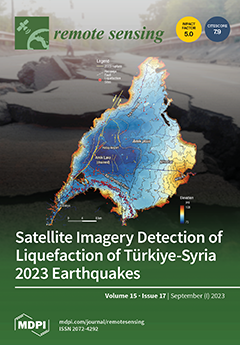The Qilian Mountains (QMs) act as the “water tower” of the Hexi Corridors, playing an important role in the regional ecosystem security and economic development. Therefore, it is of great significance to understand the spatiotemporal characteristics of precipitation in the QMs. This study evaluated the performance of 21 models of phase 6 of the Coupled Model Intercomparison Project (CMIP6) from 1959 to 1988 based on ERA5 and in situ datasets. In addition, the precipitation changing trend from 2015 to 2100 was projected according to four shared socioeconomic pathways (SSPs): namely, SSP126, SSP245, SSP370, and SSP585. The results have shown the following: (1) all CMIP6 models could reflect the same precipitation changing trend, based on the observed datasets (−2.01 mm·10a
−1), which was slightly lower than that of ERA5 (2.82 mm·10a
−1). Multi-mode ensemble averaging (MME) showed that the projected precipitation-change trend of the four scenarios was 5.73, 9.15, 12.23, and 16.14 mm·10a
−1, respectively. (2) The MME and ERA5 showed the same precipitation spatial pattern. Also, during the period 1959–1988, the MME in spring, summer, autumn and winter was 130.07, 224.62, 95.96, and 29.07 mm, respectively, and that of ERA5 was 98.57, 280.77, 96.85, and 22.64 mm, respectively. The largest precipitation difference in summer was because of strong convection and variable circulation. (3) From 2015 to 2100, the snow-to-rain ratio was between 0.1 and 1.1, and the snow-to-rain ratio climate tendency rate was concentrated in the range of −10~0.1 mm·10a
−1. Both of these passed the significance test (
p < 0.05). The projected rainfall of all four SSPs all showed an increasing trend with values of 6.20, 11.31, 5.64, and 20.41 mm·10a
−1, respectively. The snowfall of the four SSPs all showed a decreasing trend with values of 0.42, 2.18, 3.34, and 4.17 mm·10a
−1, respectively.
Full article





